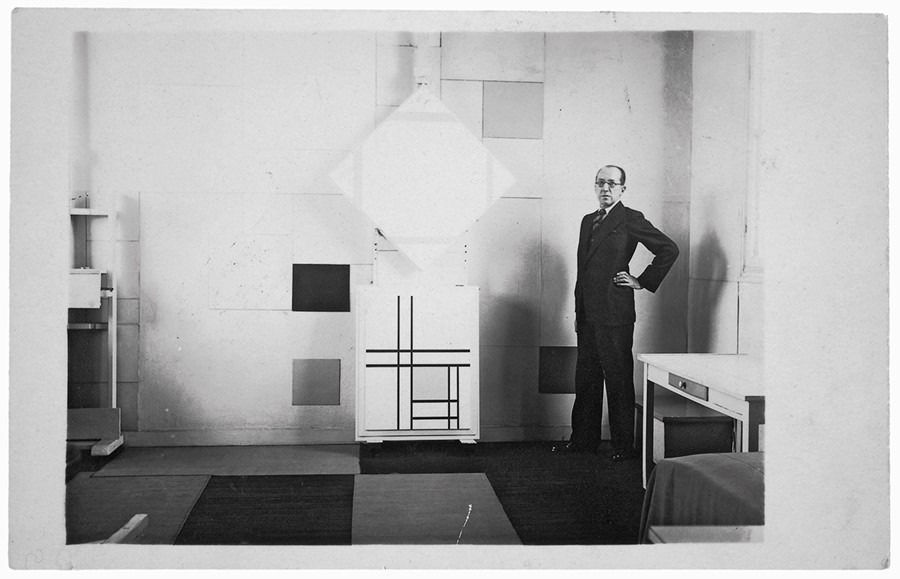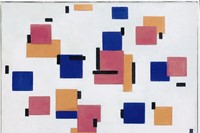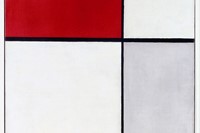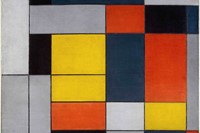In response to Tate Liverpool's exhibition Mondrian and his Studios, AnOther pick five artist's studios that are deeply reflective of their work
Mondrian’s longest held studio was in Paris, at 26 Rue du Depart. You would approach his studio through a non-descript door next to a printers shop before walking through a courtyard and up a dank communal staircase. Upon entering his apartment, you would first walk through a small corridor and vestibule (in which the artist slept) before finally arriving at the door to the studio itself. When Michael Seuphor entered it, he felt the onset of ‘an incredible feeling of beauty, of peace, of quiet and harmony’, and when Ben Nicholson left it, he took away ‘an astonishing feeling of quiet and repose’. It was a haven of white, black and primary colours, of order and geometric harmony that was constructed to exactly resemble one of his works.
"Mondrian's studio was a haven of white, black and primary colours, of order and geometric harmony, constructed to exactly resemble one of his works"
Although this studio was taken apart after he left Paris for London in 1938 (where his home at 60 Parkhill Road, Hampstead was also given the Mondrian treatment), Tate Liverpool has managed to re-construct it for their new exhibition, Mondrian and his Studios. This is a smart way of conceiving an exhibition, treating as it does the artist’s studio as a work in itself. But whilst Mondrian’s studio is clearly an intentionally designed work of art, here we’ve collected five examples of artists whose studios reflect their work in less obvious ways.
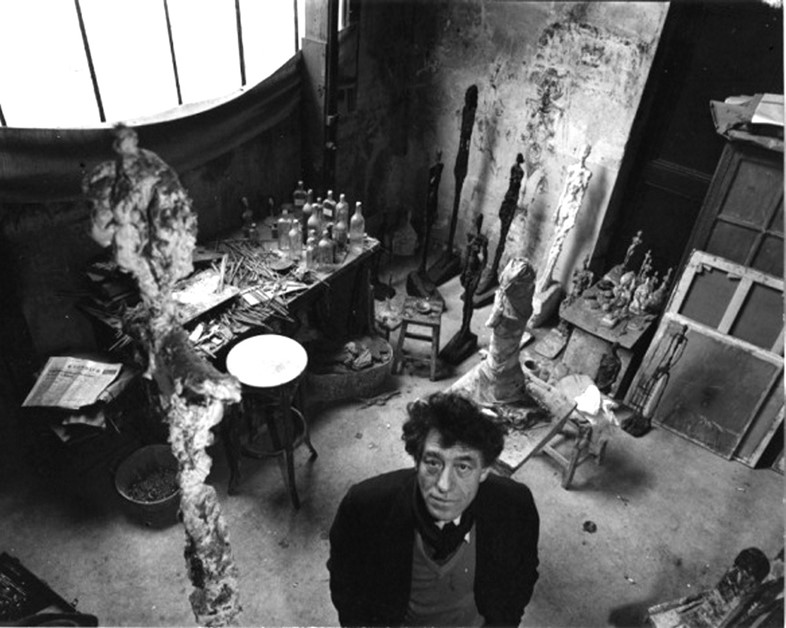
Giacometti, 46 rue Hippolyte Maindron, Paris
When Giacometti moved into his studio at on rue Hippolyte Maindron he intended to leave as soon as possible – it was dank and small with little natural light. Nevertheless, he ended up working there for the rest of his life. 'You like the shadow', Giacometti's mother said to him when he was a boy, and in this dark and dingy closet he ended up finding a home. Of sorts.
Whilst Mondrian's studio was a heaven of order, Giacometti's was a hell of mess: the floor was inches thick with discarded clay, there was paint everywhere and the surfaces of the walls and furniture were daubed all over with hurriedly sketched portraits. It's interesting, perhaps, that an artist noted for his almost invisibly thin sculptures, pared down as if to the essential facts of their existence, should have worked in a space so richly full of trash. But in fact this mess was inevitable: it was the deposit left after years of failure and intense existential questioning.
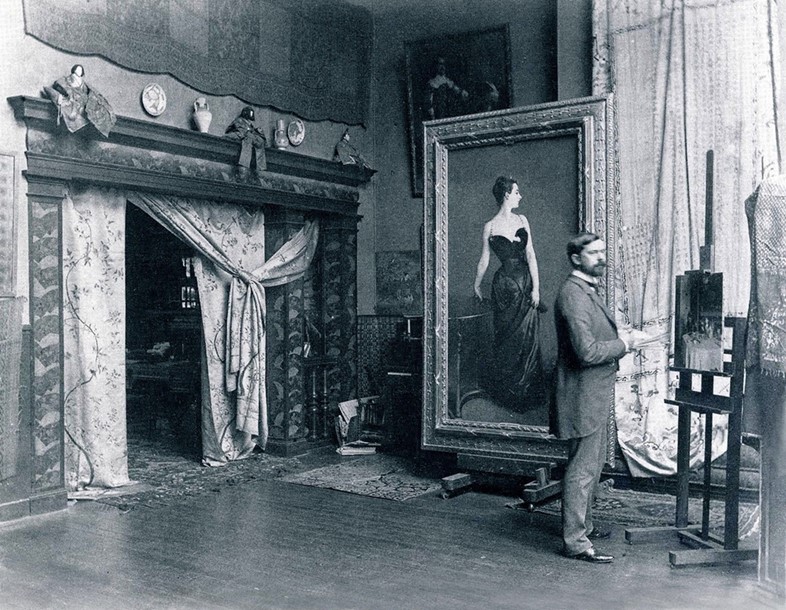
John Singer Sargent, 31-33 Tite Street, London
In the latter half of the nineteenth century, Chelsea was very much as Shoreditch is now. Just like today’s artists and creatives have moved east, attracted by the low rents and the presence of large well lit industrial spaces, Victorian artists moved westwards to exploit the large, inexpensive plots of land and the proximity to picturesque river scenes. By the time Sargent moved into the area in the 1880s, Chelsea was the centre of bohemian life in London, and Tite Street was its epicentre. Living and working in 31-33 Tite Street, Sargent counted among his neighbours Whistler, Oscar Wilde and Peter Warlock. Even Mark Twain stayed nearby during his time in London. Here Sargent became one of the most popular painters in London and visits to his studio became so frequent that he secretly bought the lease to another studio, 76 Fulham Road, so that he could have privacy to paint. A most fashionable studio for this most fashionable painter.
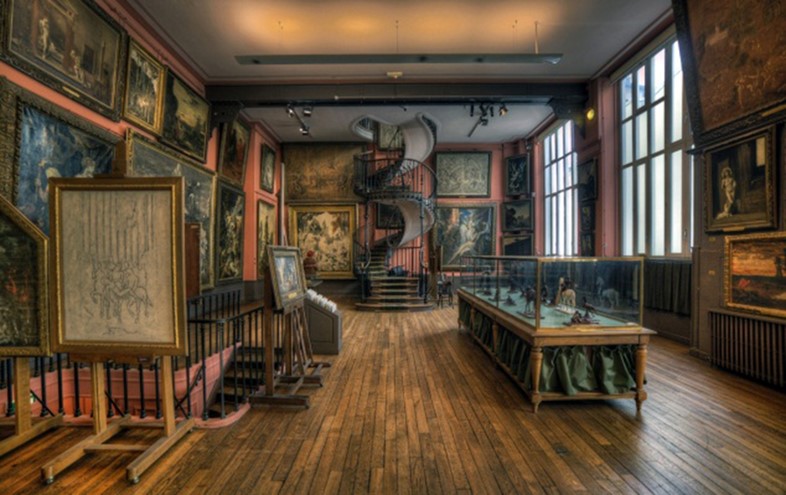
Gustave Moreau, 14 Rue de la Rochefoucauld, Paris
When he died, the French symbolist painter Gustave Moreau gave his three storey house, along with a collection of over 1,200 paintings and 12,800 drawings to the state, stipulating that it be opened to public view. Other artists might occasionally allow the public a quick glimpse into their studio, but Moreau turned his into an entire museum. If this sounds a little narcissistic, it’s not entirely out of keeping with the style of his painting: his motto was "I only believe what I do not see, and solely in what I feel", and entering this museum is like entering the private world of his imagination. The walls are hung deep with his hallucinatory paintings of mythical and religious scenes, and the cabinets are full of curiosities like stuffed tortoises, alabaster camels, miniature sphinxes and oriental ceramics. Like Mondrian, Moreau made his work space deeply reflective of his art, and the Musée Gustave Moreau is one of the most wonderful and strange museums in Paris.
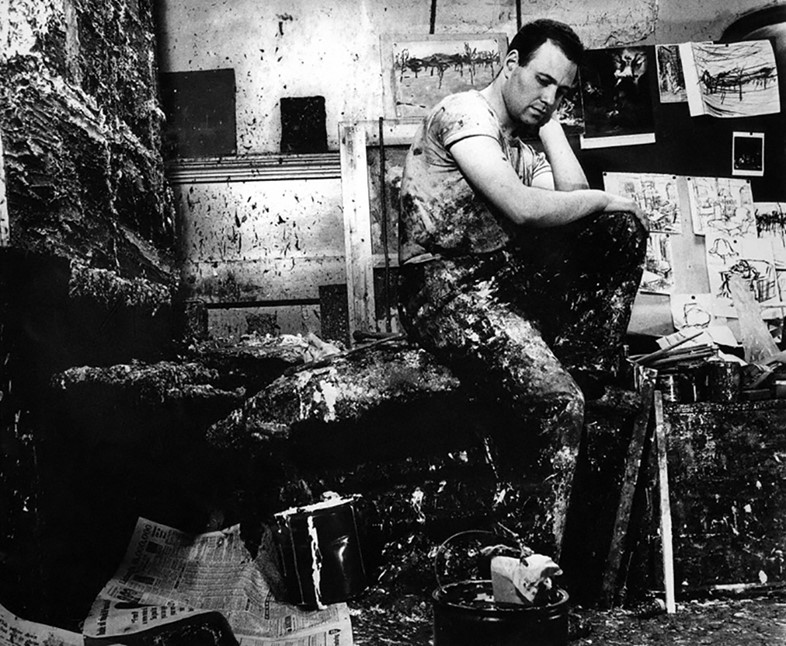
Frank Auerbach, Camden Town, London
Auerbach has occupied the same Camden town studio for his entire career. When he started out, he was apparently so poor that he lived on potatoes and yoghurt and even though he’s now a sought after and bankable artist, he still maintains a relatively Spartan lifestyle: "I became solvent so late that it’s too late for me to change", he says. Far from the stereotype of the intemperate and impulsive artist, Auerbach leads a steady and well-regulated working life here. He works every day of the year but one and has been seeing the same sitters for many, many years – the longest serving being his wife who’s sat for him for 52 years. His studio is a monument to his dedication and to his deep love for his craft.

The Newlyn Group, Lamorna Valley, Cornwall
Between the 1880s and early twentieth century a group of artists, among them Laura Knight, Stanhope Forbes and Alfred Munnings, settled in a small colony in Newlyn, Cornwall, and in the surrounding Lamorna Valley. Taking their cue from the French impressionists, they advocated en plein air painting and moved to the area to take advantage of its abundance of picturesque scenes. The valleys and coves of Cornwall were their studio and they left behind them a body of work that is partly responsible for the sun-dappled, idyllic image of Cornwall that occupies the public imagination. What they took from the area in beauty, they certainly more than gave back.
Mondrian and his Studios is at Tate Liverpool until October 18.
Text by Max Fletcher
